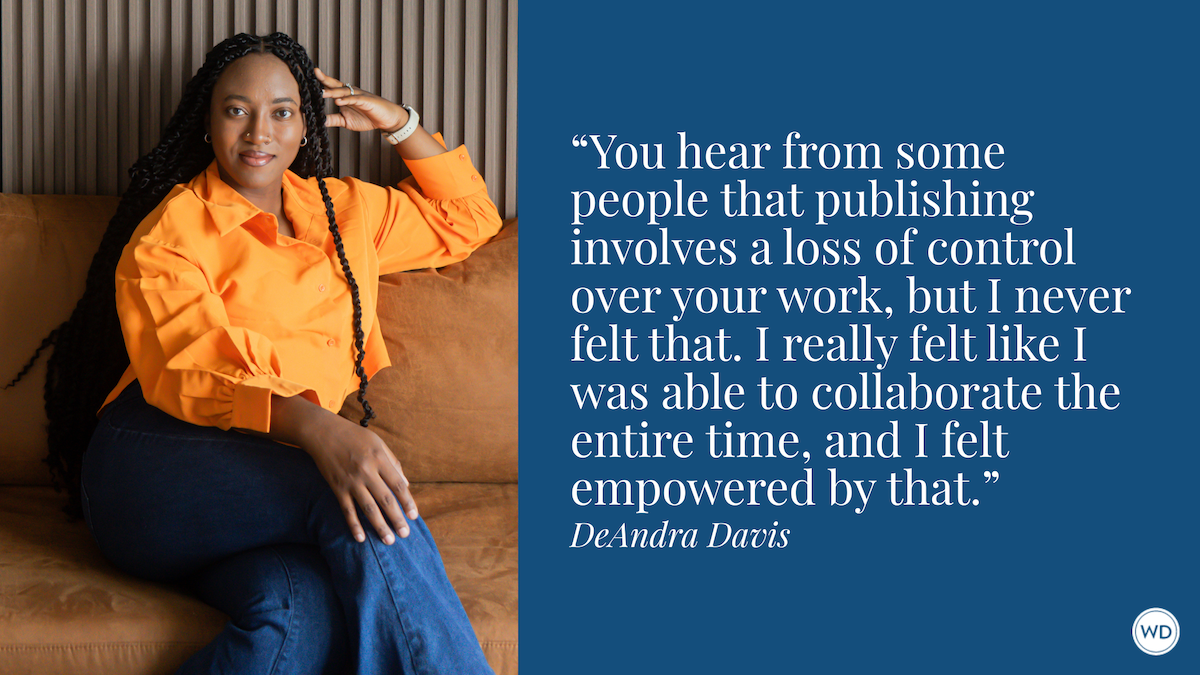5 Things All YA Novels Need To Succeed
YA readers are among the most enthusiastic about the stories they read. Here, award-winning YA and children’s author Anthony McGowan shares 5 things all YA novels need to be successful.
Whenever you try to lay down restrictive definitions or lists of rules to be followed or even broad guidelines in creating good stories, you’re always going to come across two problems. There will be great books that ignore your rules, and there will be terrible books that follow them. So, everything I say below should be viewed with at least a little skepticism.
It’s also true that in general what makes a good piece of young adult literature is pretty much the same as what makes any genre, type, or age of literature worth reading: great characters, great plot, great setting, great writing. Duh.
But, with those caveats, I’ve tried to come up with some of the principles that float around in my head while I’m writing YA.
Might be worth saying that while my new book, Dogs of the Deadlands isn’t strictly YA, it is the kind of children’s book that I hope will appeal to all readers, from 9-90, and certainly including teenagers. And although most of the main characters are dogs, wolves, and the hybrid offspring of the two, much of what follows applies to them, too. Kinda.
1. Create a main character your reader will love.
YA readers hurl themselves wholeheartedly into books—it’s why they are such a rewarding audience to write for. And what they want above all else is a main character they can fully invest in. No, let’s use the L word—a character they can love.
An easy way to short-circuit this is simply to make your character likable. You can show them being kind to animals, small children, old people. Or you can subject them to Bad Things they Don’t Deserve, like being made an orphan, or being bullied, or having an illness, ideally both dangerous and yet not too disfiguring.
If you do these things, you won’t lose any money. Your readers will be on the side of your protagonist. YA is full of these likable characters. If they have faults, it’s what I call the Astrology Faults—the kind of thing you read about in cheesy astrology columns. “You’re too generous.” “You’re too honest for your own good.” “You put other people ahead of yourself—why not put yourself first for once?”
Or they are the sort of faults that might endear you to the world—being a bit scatty or forgetful, being dreamy or impractical, or wearing strange hats. You all know those types of character. They live in books, but never in the real world, where actual humans are more complex, more nuanced, more difficult.
So, what I like to do is to add back in some of that complexity, that marbling. This is potentially dangerous. If you make your character too unlikeable (or, as I would term it, too realistic), the reader will never fall in love with them. Your character has to “earn” the right to be dark and difficult. The reader must know that the overall balance is still weighted to the good.
But bearing that in mind, give your central character some serious flaws. Perhaps they are capable of violence. Perhaps they lie or steal. Or they’re self-centred. If you can take that person on a journey, in the course of which they realize the flaws in their own character and heal those flaws while also defeating the monster—heck, perhaps only defeating the monster because they’ve healed those flaws—then you have a character who has earned the love of the reader.
In Dogs of the Deadlands, the main characters are a female dog called Zoya, who may have a little wolf in her, and her offspring, half-wolf brothers Misha and Bratan. Misha is the main point of view character, and the story is really about his coming of age. As he’s essentially a dog, there isn’t room for too much light and shade in his character, though you’re certainly supposed to fall in love with him. Perhaps his most appealing quality is his determination to look after his disabled brother.
But being half wolf, Misha is a fierce predator, and the reader has to endure some pretty violent scenes. There’s also a human character, Natasha, who loses her beloved puppy at the beginning of the story, and only finds consolation and happiness right at the end. She is certainly quite complex: wounded and damaged and lonely, but essentially good.
2. Put your characters in a world your reader will find both familiar, and yet strange.
YA readers like to read books set in a world that corresponds in some ways to their own, mirroring the challenges and trials they face. But they also love escapism, to be taken out of their own humdrum life, and put down in a place where those challenges have higher stakes.
Think of all those stories where seemingly ordinary teenagers, dealing with schoolwork, romance, gangs, and bullying, find they have superpowers. Or the mashup between ordinary life and the supernatural in something like Twilight.
In Dogs of the Deadlands, the world might seem very far removed from that of most YA. It’s the blasted, desolate, but also beautiful area around the abandoned Chernobyl nuclear plant. Into this world there come the dangerous beasts, previously excluded by the humans: lynx, bear, bison, wolves.
This is the world my dogs have to learn how to survive. Is it a bit like high school? Perhaps a little!
3. Offer a central challenge that feels both fresh and universal.
It’s hard being a young adult. At school you have to deal both with the requirement to cram information into your head and get the grades that will dictate the sort of future life you’ll lead. And yet you also have to deal with the supernova of first love, and the complexities of friendship, with a brain and emotional apparatus that are still in the process of being formed.
At home you have parents who may want the best for you, yet who appear as the Great Enemy, stopping you from doing the things you dearly want to do. All YA literature will feature all or some of these challenges. But it’s not enough. There needs to be a unique twist, an added intensity, something to wrench the characters out of the ordinary.
In Dogs of the Deadlands, the central challenge is to survive in that brutal but beautiful landscape. But there’s also a mystery to be revealed, and redemption for the human characters. And also romance . . .
IndieBound | Bookshop | Amazon
[WD uses affiliate links.]
4. Provide an antagonist you can safely hate.
If you have a central character the reader must love, it’s almost as important to have an antagonist the reader can hate. That’s partly because every great story needs peril, and a good villain is the best way to generate that danger. But also, teenage life and the school environment are among the very few times in life where we genuinely come up against people who want to harm us, people who, from our point of view, are unequivocally the baddies.
I like to see in an effective antagonist a figure who, at first, appears to the central character as truly evil (or at least despicable), someone who seems focussed on ruining their life, on destroying or even killing them. The villain must appear almost as the embodiment of evil, a figure of nightmare. We should feel that hate and that fear along with the protagonist.
Ideally then I would add some complexity, some understanding of the forces that have generated this monster. Do we ever come to fully comprehend, or even sympathize with the monster? Probably not! But at least you’ve created a living thing, and not a mere puppet.
In Dogs of the Deadlands, there are a series of villains, set on killing the dogs, most notably a lynx, and a female wolf called Cross-face. From the point of view of the dogs, the wolves are the main threat, and with the dogs we fear and loathe them. But by the end, we’ve come to understand them better and, without wanting to give too much away, there’s a … coming together.
5. End with eucatastrophe.
J.R.R. Tolkien introduced the concept of eucatastrophe in an essay he wrote on fairy tales in 1947. In its simplest form the term just means a happy ending. But for Tolkien it was a particular type of happy ending. All is lost. The main character is at the lowest imaginable point. They are doomed, with no hope of redemption. And yet somehow, they triumph: Light emerges from absolute darkness.
And crucially, this reversal, this plucking of glory from the ashes, is a result of the qualities of the main character: their goodness, their courage, their intelligence. That switch from despair to unexpected joy is hugely powerful. In a YA novel it might not be some Tolkienesque battle in which good triumphs over evil: It could just be that our cute but hopeless main character gets the girl or the boy or the job or the college place when it seemed all they’d get was humiliation.
In Dogs of the Deadlands I have a series of crises, each one of which seems inescapable, and each one of which is more fraught and desperate than the last. If the dogs survive, it is because of their resourcefulness and dauntless courage and fraternal love. And if Natasha finally finds happiness, from a position of hopelessness, it is again through her own indomitable will and determination.
Anthony McGowan is one of the most widely acclaimed young adult and children’s authors in the U.K. His books have won numerous major awards. In 2020, he was awarded the CILIP Carnegie Medal for Lark. He was also shortlisted for the Carnegie Medal with Rook and won the Booktrust Teenage Prize and the Catalyst Award for Henry Tumour. His YA novel The Knife That Killed Me was made into a critically lauded film in 2014. Anthony lives in London, with his wife, two children, and dog.








